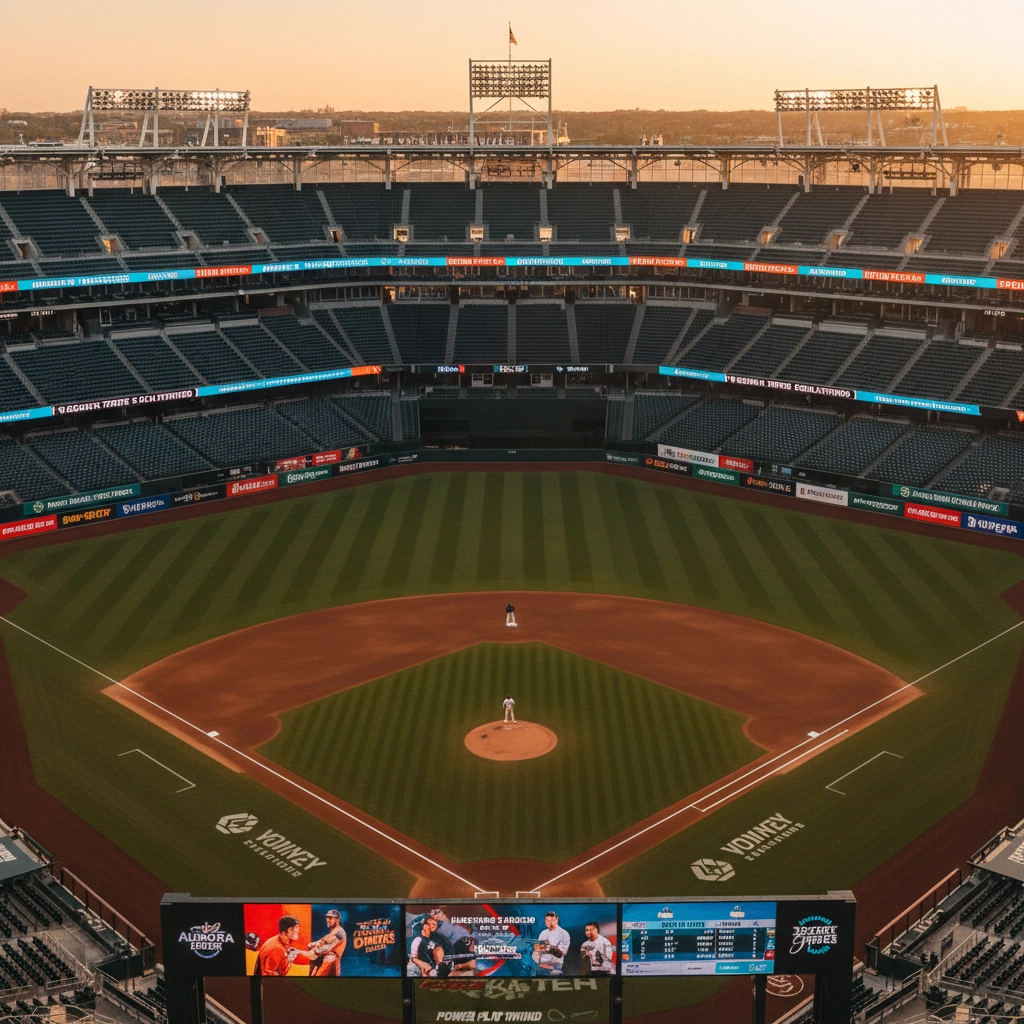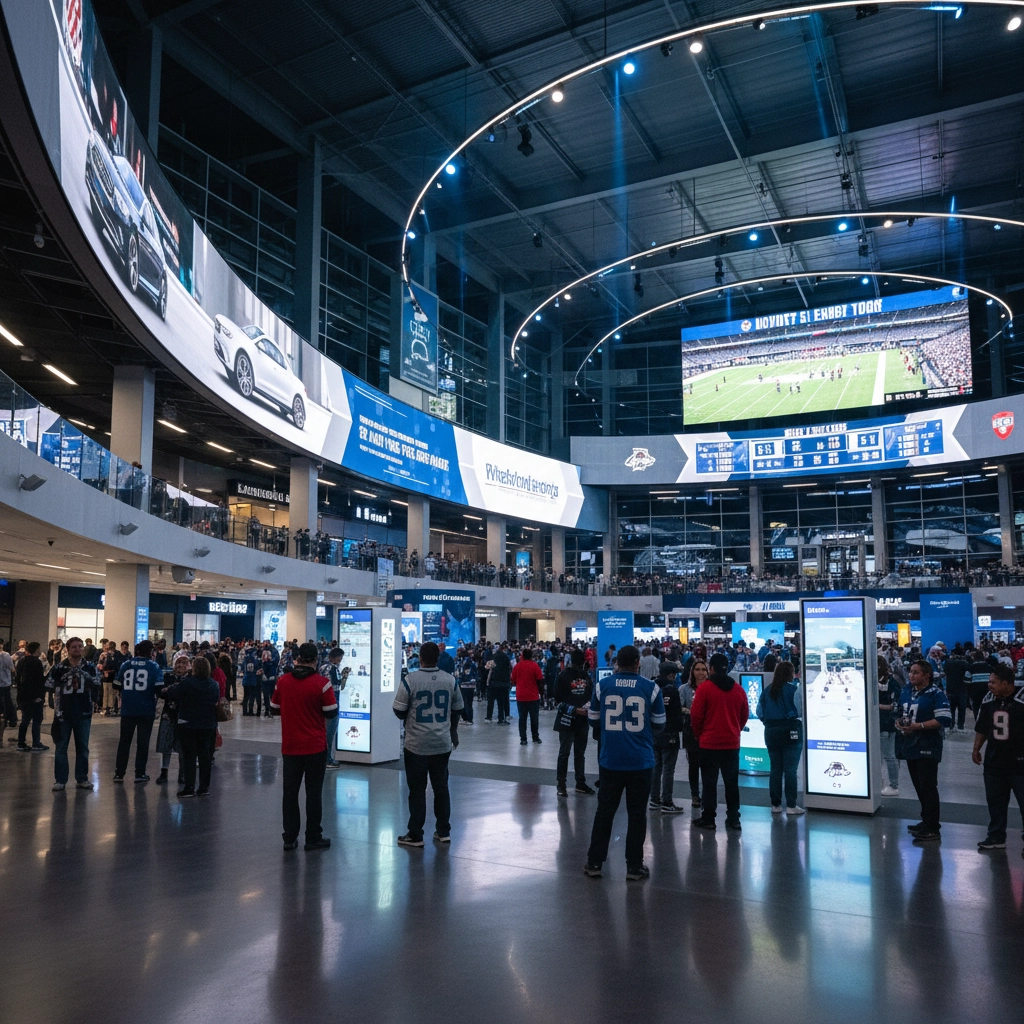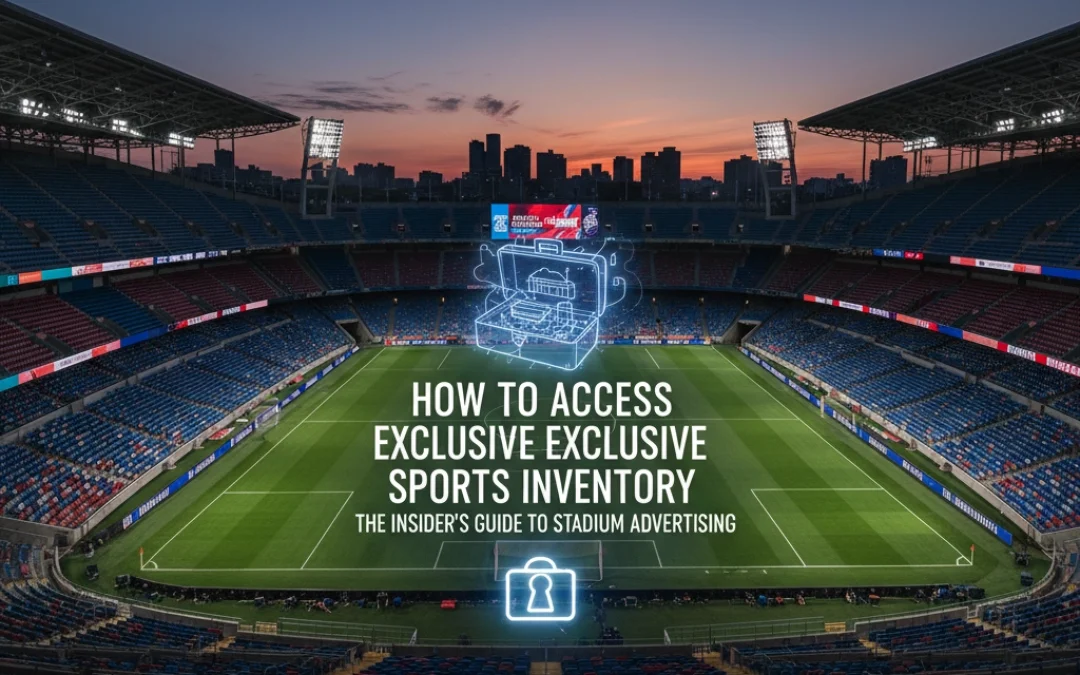Getting your hands on exclusive sports inventory isn't about who you know: it's about knowing how the system works. Most brands fumble around in the dark, throwing money at the wrong people at the wrong time. You don't have to be one of them.
Here's the reality: premium stadium advertising inventory exists, but it moves fast and follows specific channels. Miss the window, approach the wrong contact, or misunderstand the buying process, and you'll end up with leftover scraps or paying premium prices for mediocre placements.
Know Your Inventory Categories Before You Start
Stop thinking of stadium advertising as just "putting up a sign." The inventory landscape breaks into three distinct categories, each requiring different approaches and budgets.
Broadcast-visible inventory sits at the top of the food chain. These placements appear on television broadcasts, reaching millions beyond the stadium walls. LED ribbon boards behind home plate, courtside signage during basketball games, and field-level displays during football broadcasts fall into this premium category. Expect to pay accordingly: and expect fierce competition.
In-venue exclusive placements target the live audience only. Concourse advertising, club-level signage, and premium seating areas offer direct access to high-value demographics without broadcast exposure. These spots often provide better engagement rates because fans interact with them during extended periods (concessions, halftime, between innings).
Digital and video inventory represents the fastest-growing segment. Jumbotron spots, LED displays throughout concourses, and mobile app integrations offer dynamic content opportunities that static billboards simply cannot match. Video content creates deeper emotional connections with fans: something static advertising struggles to achieve consistently.

Map Out the Real Decision Makers
Forget the general "sales contact" listed on team websites. Exclusive inventory requires reaching the right people within the organization, and that structure varies significantly across leagues and teams.
Team-direct relationships work best for major market franchises with sophisticated sales operations. Look for Director of Corporate Partnerships or VP of Business Development roles: these individuals control premium inventory allocation. However, don't assume they handle everything. Many teams segment their sales by inventory type.
League-level partnerships often control the most coveted placements. MLB, NBA, NFL, and other major leagues maintain exclusive agreements with specific agencies for certain inventory categories. Research these partnerships before approaching teams directly, or you'll waste time talking to people who cannot access what you want.
Specialized intermediaries manage significant portions of available inventory. Companies like ours maintain direct relationships with venue operators and can access inventory that teams don't actively promote. These partnerships exist because teams prefer focusing their internal sales efforts on comprehensive sponsorship packages while outsourcing individual inventory sales.
Remember: teams make more money selling complete sponsorship packages than individual advertising placements. This creates opportunities for savvy buyers who understand how to work with specialized intermediaries.
Time Your Approach Strategically
Inventory availability follows predictable patterns, but most brands approach at the worst possible times. Understanding these cycles gives you significant advantages in both availability and pricing.
Off-season represents peak opportunity for the following year's inventory. Teams know their schedules, understand their promotional calendar, and can offer the widest selection of available placements. Approach teams 3-4 months before season start for maximum selection.
Mid-season openings occur regularly due to sponsor cancellations, budget changes, or underperforming partnerships. Teams need to fill these gaps quickly, creating opportunities for flexible buyers. However, you must be ready to move fast: sometimes within 48-72 hours.
Playoff inventory operates differently across leagues. Some maintain exclusive partnerships that control all postseason advertising, while others open limited inventory to regular season sponsors first. Understand these rules before the season starts, not when playoff schedules get announced.

Build Relationships That Matter
One-time transactions get you inventory. Ongoing relationships get you exclusive opportunities before they hit the general market. The difference matters more than you might expect.
Start small and prove reliability. Teams remember brands that pay on time, provide materials without delays, and don't create operational headaches. This reputation opens doors to opportunities that never get publicly marketed. Once you establish credibility, sales representatives will call you first when premium inventory becomes available.
Understand the sales representative's goals. Most work on commission structures that favor larger deals, but they also have monthly and quarterly targets. Help them hit those targets with reliable business, and they'll prioritize your needs when exclusive opportunities arise.
Participate in team events and hospitality opportunities. This isn't about schmoozing: it's about understanding team culture, fan demographics, and upcoming promotional plans that might affect inventory availability. The insights you gain inform better buying decisions.
Connect with specialized agencies that maintain exclusive partnerships with multiple teams and venues. These relationships provide access to inventory pools that individual team sales departments cannot offer.
Navigate the Pricing Reality
Exclusive inventory commands premium pricing, but understanding the underlying economics helps you negotiate more effectively. Teams and venues operate on specific financial models that create opportunities for strategic buyers.
Broadcast-visible placements price based on television audience reach, not live attendance. A small-market team with national television coverage might charge more than a large-market team with regional broadcasts only. Research the media deals before evaluating pricing proposals.
Package deals often provide better value than individual inventory purchases, but only if you can use all components effectively. Teams prefer selling packages because it simplifies their operations and increases overall revenue per client. However, don't buy inventory you won't use effectively just to access one premium placement.
Seasonal pricing fluctuates based on team performance expectations. Contending teams charge premium rates because they anticipate higher attendance and viewership. Teams expecting rebuilding years often offer more flexible pricing to maintain revenue targets.

Avoid These Critical Mistakes
Most brands make the same errors when pursuing exclusive sports inventory. Learn from others' mistakes instead of making them yourself.
Don't assume all inventory is available all the time. Premium placements often get reserved by existing sponsors with renewal rights. Research these existing partnerships before developing campaigns that depend on specific placements.
Stop focusing only on major league properties. Minor league teams, college athletics, and regional sports often provide better value and more flexible partnerships. These properties also offer testing grounds for campaigns before scaling up to major league investments.
Never ignore operational requirements. Sports venues have strict guidelines for creative materials, installation deadlines, and content approval processes. Missing these deadlines can result in forfeited inventory without refunds. Build buffer time into your campaign development process.
Don't overlook exclusive renewal clauses. Many inventory agreements include automatic renewal options or first right of refusal clauses. Understanding these terms prevents you from building campaigns around inventory that existing sponsors can reclaim.
Leverage Technology and Data
Modern sports inventory buying increasingly relies on data-driven decisions rather than gut feelings or traditional media buying approaches. Use this shift to your advantage.
Audience measurement tools now provide detailed demographics for specific seating sections, concourse areas, and even individual advertising placements. This data helps justify premium pricing and enables more precise campaign targeting.
Digital integration opportunities allow traditional stadium advertising to connect with broader digital marketing campaigns. QR codes, social media integration, and mobile app connections extend the reach of your stadium investment beyond the venue walls.
Performance tracking capabilities enable real-time campaign optimization. Unlike traditional outdoor advertising, many stadium digital placements allow content changes, A/B testing, and performance measurement throughout campaigns.

Execute Your Strategy
Once you understand the landscape, identified the right contacts, and developed your approach strategy, execution becomes straightforward. However, success requires attention to specific operational details that many brands overlook.
Prepare comprehensive creative packages before approaching inventory holders. Teams and venues need to approve all creative materials, and this process can take several weeks during busy periods. Have multiple creative options ready to accommodate different inventory types and sizing requirements.
Establish clear communication protocols with your team contacts. Determine who handles creative approvals, payment processing, and installation coordination. Miscommunication during execution phases can result in missed opportunities or additional costs.
Plan for contingencies in case your primary inventory choices become unavailable. Have backup options identified and pre-approved to avoid delays when changes occur. Teams appreciate working with prepared buyers who understand the realities of sports business operations.
Document performance metrics from the start of your campaigns. Sports properties increasingly require performance data from sponsors and advertisers to justify pricing and demonstrate value to their own stakeholders.
Remember: exclusive sports inventory access comes from understanding the system, building the right relationships, and executing professionally. Master these fundamentals, and you'll find opportunities that your competitors miss entirely. The inventory exists: you just need to know how to find it and who to contact when it becomes available.
Working with experienced sports media specialists can accelerate this process significantly, providing immediate access to established relationships and inventory sources that take months or years to develop independently.


Recent Comments